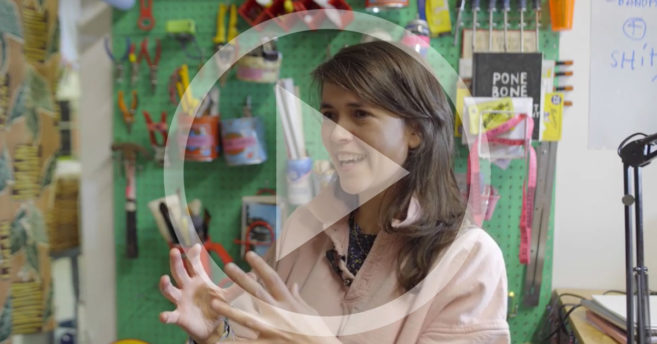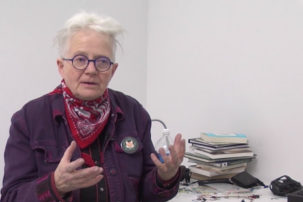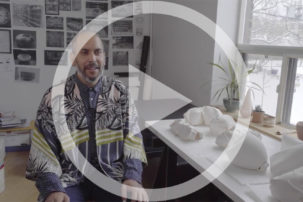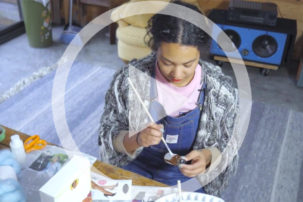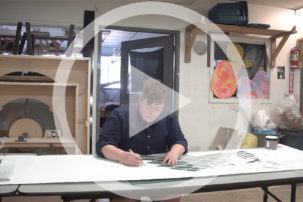In her presence and in her politics, Lido Pimienta tells us we can and should take up space. Her work has been carving out space for femme, queer and trans Black and Indigenous people of colour (QTBIPOC) long before she began to encourage them to come to the front of her sold-out concerts. Her songs narrate the trials and tribulations of her own romantic relationships, and in her stage banter she talks about getting over trifling men. She tells of an abusive ex-boyfriend who tried to blackmail her with nudes she had sent him. She was terrified of how her mother would react, but when she told her about it, her mother called him up and encouraged him to leak them in that moment. “When this happened to Kim Kardashian she became a millionaire,” her mother told him. Pimienta declares onstage that abusive men are the ones who should be terrified now—finally.
The boisterous figures in Pimienta’s artworks are more than stage pieces and merch design; they’re an embodiment of her fearless stage spirit and her unapologetic anti-colonial, anti-patriarchal politics. She doesn’t see any division between her art, her music and her activism. “A lot of my songwriting is inspired by the drawings that I make, and the drawings that I make are inspired by dreams that I have, and the dreams that I have are influenced by my everyday life,” she says.
Her ethos pours into the bustling patterns and vivid colours of the figures feeling themselves. Whether in weavings, tapestries, paintings, zines or silkscreens, they’ve been immediately identifiable as Lido Pimienta ever since I met her in the basement of H.B. Beal, a specialized high-school art program in London, Ontario, in 2007.
Though the figures have been recurring in her work since then, they’ve been growing with her. “I know it’s because I’m looking for my family. I’m looking for myself. The same image appears because I’m not able to see my family every day.” She draws from photos she brought with her from Colombia, memories of growing up there, FaceTime conversations with family. “That’s my imagery: my family in different scenarios.”
The images function as a reminder and as a connection. “I was lucky to come not when I was 3 years old, but when I was almost 20. I know who I am and I know where I’m going. And that’s why, when you see something made by me, you know it was made by me. And when you see imitators you can tell they’re ripping off Lido. But you can’t. Even if you want to I’m already 10, 20, hundreds, thousands of steps ahead of you.”
In this studio-visit video, Pimienta discusses how her art synthesizes her politics and her life.—Merray Gerges, assistant editor

